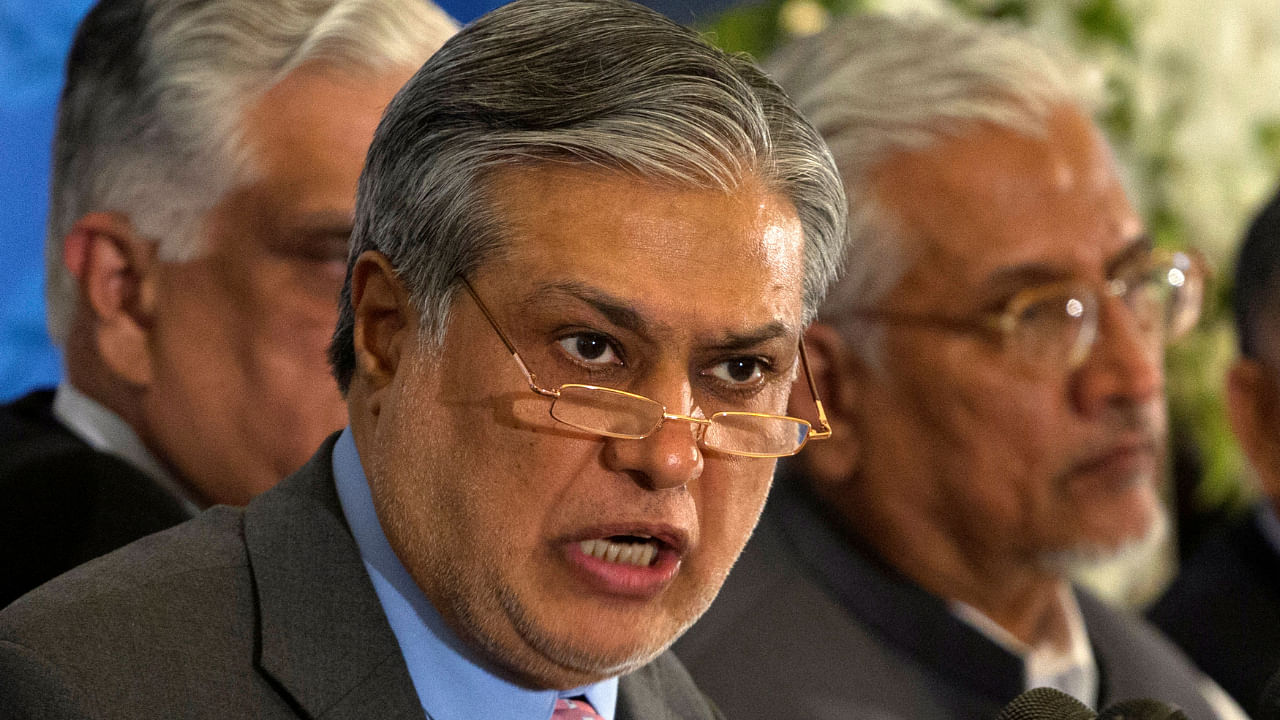
Like an F16 in a downward spiral, Pakistan's economy is in a tailspin. It immediately needs about $20 billion to stabilise its balance of payment, avoid defaults on its foreign currency loans and provide stimulus after a devastating flood. It's barely gathered $4 billion so far.
The difficulty is that even after a huge IMF bailout amounting to $1.6 billion under its Extended Fund Facility (EFF), the foreign exchange reserves are down this year by a whopping fifty per cent to just $8 billion. This will barely cover five weeks of imports for the country.
The Pakistan rupee is facing a dollar rout, with citizens needing Rs 216 to buy just one dollar.
Earlier this year, a classic display of a person addicted to loans was recreated, albeit on a mega sovereign international level. Just like people who use one credit card to pay another credit card bill and get stuck in a personal debt quagmire - Pakistan undertook a collateralised debt obligation from China for $1.5 billion to partly pay off a Saudi loan. According to AHL, a research company, the yields on Pakistan bonds maturing in 2024 and 2025 have shot up by an unbelievable 60.7 per cent. China has given Pakistan expensive short-term debt amounting to $5 billion in the last three years, and now in a scary repeat of the Sri Lanka disaster, 30 per cent of Pakistan's foreign debt is owed to Beijing.
The irony is that all new debt that Pakistan acquires will not change an iota of its financial condition or build any sustainable infrastructure to boost economic growth. This is good money after bad – taking loans to return loans. The economy has deep structural troubles, and no one is interested in dealing with them.
Firstly, the political class has abdicated the role of economic stewardship a long time ago. A country rich in agriculture has no value-added industry such as food processing. A sizable player in the global sports goods and rice markets, yet in both, it was unable to scale up or make any brand presence whatsoever. The ruling elite, mostly land-holding billionaires from Punjab and army generals, have parked an estimated $100 billion abroad. This passing the parcel has been going on for 75 years, in which time Islamabad has seen 23 bailouts from the IMF and at least 30 from the Gulf states led by Saudi Arabia. Now the music has stopped. For one thing, with the US withdrawal from Afghanistan, the strategic value of Islamabad has shrunk, and for another, the stalled promise of the mega China-sponsored CPEC, which was to create roads, power plants and ports and thus kickstart Pakistan into an economic hub with $46 billion.
Without geopolitical heft or financial muscle, Pakistan is bereft. It now turns out China too was not investing, but lending – the rate of return partly in dollars for Chinese investments is about 6 per cent a year – something Pakistan can ill afford. The CPEC flagship, the deep sea port of Gwadar, classically underlines Pakistan's biggest problem – a lack of demand. The port has been operational for almost two years with hardly any ship transport to show for it.
Another problem is that Pakistan's wealthiest province Balochistan which has minerals, natural gas and resources, is in the middle of a full-fledged fight for independence. This makes investors, especially the Chinese, very nervous.
Defence spending shackles its economy further. It cannot cut spending away from the powerful military establishment even in its dire fiscal situation. Pakistan is scheduled to spend $10 billion on defence in 2023. It has untested Chinese-made, or Chinese co-developed weapons, being Beijing's biggest weapon buyer. Its US arms are ageing, its Chinese weapons are untested, and the sixth largest army in the world with 650,000 personnel is a men heavy force in a mobile and sensor-driven battlefield.
With so much money drained by an inefficient fighting force, Pakistan's ability at fiscal consolidation is seriously hampered. Yet structurally, the defence budget remains untouchable given the nature of Pakistan's polity.
A final structural trial is a rise in Pakistan's population. By 2050, it is projected to have 340 million people, up from 220 million today. This exponential growth without the skills, nutrition and education to complement it is a demographic nightmare that will swallow even a five per cent per year GDP growth. Compare this to Bangladesh and India, where the growth rate of population has stabilised and will fall by 2050 below the replenishment rate in India's case, and you understand that Pakistan may prove Malthus right.
The farce of a nuclear weapon power seeking rent from foreigners to keep its people well fed has run its course over 75 years of Independent Pakistan. The Islamic republic has run out of money. Unlike an F16 pilot in a tailspin, the hapless Pakistani has no ejection seat and will not survive the crash. Without a viable economic future, the Islamic republic is nothing but a glorified military cantonment with a Mosque within.
(Ninad D Sheth is a journalist)
Disclaimer: The views expressed above are the author's own. They do not necessarily reflect the views of DH.